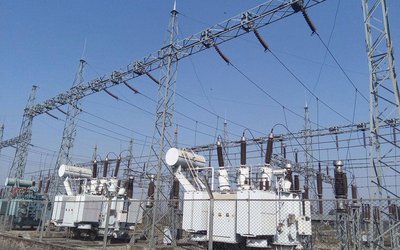A deal of great significance for Asia aimed at facilitating infrastructure development through a new financial architecture has recently been finalized, with the establishment of the Asian Infrastructure Investment Bank (AIIB), to be headquartered in Beijing, China.Once operationalized, this multilateral organization will increase the pool of support available to regional economies for infrastructure development and, thus, will help fill in the significant gap between their financing needs and the resources available from existing sources.
History
It was only in October 2013, that Chinese President Xi Jinping, during his visit to Southeast Asian countries,had announced hisproposal for an organizationthatwould focus on promotingregional interconnectivity and economic integration in Asia.Following the announcement, welcomed by most countries, a series of bilateral and multilateral discussions and consultations commenced on core principles and key elements for its establishment. By the end of October 2014, twenty-two Asian countries had already signed a Memorandum of Understanding to establish the AIIB, and an Interim Secretariat,to be led by a Secretary General, had also been formed.This fast pace in realizing an idea into reality is certainly no less noteworthy.
Detailed discussions amongst theprospective founding members on the establishment of the AIIB, then, commenced in Kunming, China (November 2014). This was followed by a second meeting in Mumbai, India (January 2015),which also launched the discussions of the Articles of Agreement (Charter) of the organization. The third meeting in Almaty, Kazakhstan,in March 2015, further refined the Charter, following which, on June 29, 2015,it was opened for signature. Fifty countries (founding members) have already signed; others have until the end of this year to do so and become a founding member. Other non-founding regional as well as non-regional membersare also entitled to sign and obtain membership.The AIIB Charter is expected to enter into force by the end of 2015, once the instruments of ratification, acceptance or approval have been deposited by at least ten signatories whose initial subscriptions, in the aggregate, comprise not less than fifty per cent of such subscriptions.
Charter
With sixty elaborate articles, including two schedules, the Charter, largely modelled on the constituent instruments of the existing international financing institutions, describesin detail the AIIB’s governance, management, capital,and membershipsstructures. China, it may be pointed out,will retain the largest number of shares, from amongst the regional members, followed by India, Russia, Korea and Australia. From amongst the non-regional members, Germany will retain the largest number of shares, to be followed by France, Brazil and the United Kingdom.The Charter envisages threecategories of votes: basic votes (equal for all, constituting 18% of total votes), share votes (equal to the number of shares), and founding member votes (600 votes for each founding member). Nepal, it may be noted, is also a founding member.
Diplomatic Challenge
Although relatively and seemingly fast-paced, arriving at the stage of signing the Charter has not been easy. The new institution is regarded as a potential competitor to the World Bank, the IMF,and the ADB, which many claim, are dominated by American, European and Japanese interests. Many countries serving these interests were, therefore, skeptical at the outset. This perhaps also explains why the United States’ government went to the extent of warningits allies from joining the AIIB, a warning thatwas ignored, however, even by its closest of allies like the United Kingdom, which ultimately decided to become part of this new venture. As of now, the United States and Japan remain the two major economies that have declined to join (nothing suggests that this position will be permanent, however).
Objective
The purpose of the AIIB, as per the Charter, is to: (i) foster sustainable economic development, create wealth and improve infrastructure connectivity in Asia by investing in infrastructure and other productive sectors; and (ii) promote regional cooperation and partnership in addressing development challenges by working in close collaboration with other multilateral and bilateral development institutions.As emphasized by many, the AIIB is a multilateral development bank (MDB) conceived for the 21st century. It, thus, has to be able to cater to the countries’ needs of the 21st century. In that vein, through a participatory process, its founding members have developed the core philosophy, principles, policies, value system and operating platform. For all practical purpose, its areas of engagement are expected to be relatively broad and include investments in goods and services in energy and power, transportation and telecommunications, rural infrastructure and agriculture development, water supply and sanitation, environmental protection, urban development and logistics, and other productive sectors as deemed appropriate. To achieve these goals, the AIIB will cooperate closely with its members, existing MDBs and other development partners, the private sector and the civil society,it’s financing complementing as well as supplementing their efforts.
Decision Making and Governance
The AIIB’s strong and diverse ownership foundation (global membership, albeit with small exceptions) is expected to provide a sound base for enhanced development effectiveness. Its foundation is built on the lessons learnt from the experience of existing MDBs and the private sector. Its modus operandi is, as articulated by the Secretary General of the Interim Secretariat, expected to be lean (small efficient management team and highly skilled staff), clean (ethical, with zero tolerance for corruption), and green (built on respect for the environment). For this purpose, the AIIBaims at putting in place strong policies on governance, accountability, debt sustainability, and adequate financial, procurement, and environmental and social management frameworks, all relying on international good practices.
Prospects
There is every reason to be optimistic about the new organization which shows the potential of bringing in the much-needed financing and knowledge to a continent in needand, thus, being a catalyst for its development.But to ensure success, in addition to focusing on the development of infrastructure and other productive sectors in Asia, the AIIB will have to also remain efficient,and flexible. Certainly, one can notice a trace of that philosophy in that the operational strategy and priority areas of engagement are subjected to revision or further refinement by its governing boards in the future as circumstances warrant, but how systematically and diligently that will be practiced still remains to be tested.Be that as it may, established to complement and to cooperate with the existing MDBs to jointly address the daunting infrastructure needs of Asia, the contribution of this organization is sure to be useful for Nepal, at the least, as an alternative passage to development!

Dr. Kishor Uprety
The author can be reached at kshitiz@juno.com
- Not Yet Totally Lost. Hope Remains!
- Jul 20, 2023
- Book Review: CHAKRABYUHAMA NEPAL KO JALASROT (WATER RESOURCES OF NEPAL IN A LABYRINTH)
- Jan 14, 2023
- An Overture Filled with Confusion
- Nov 27, 2022
- A Tumultuous Destiny
- Apr 18, 2022
- What Next For The Nation?
- Dec 13, 2021
















